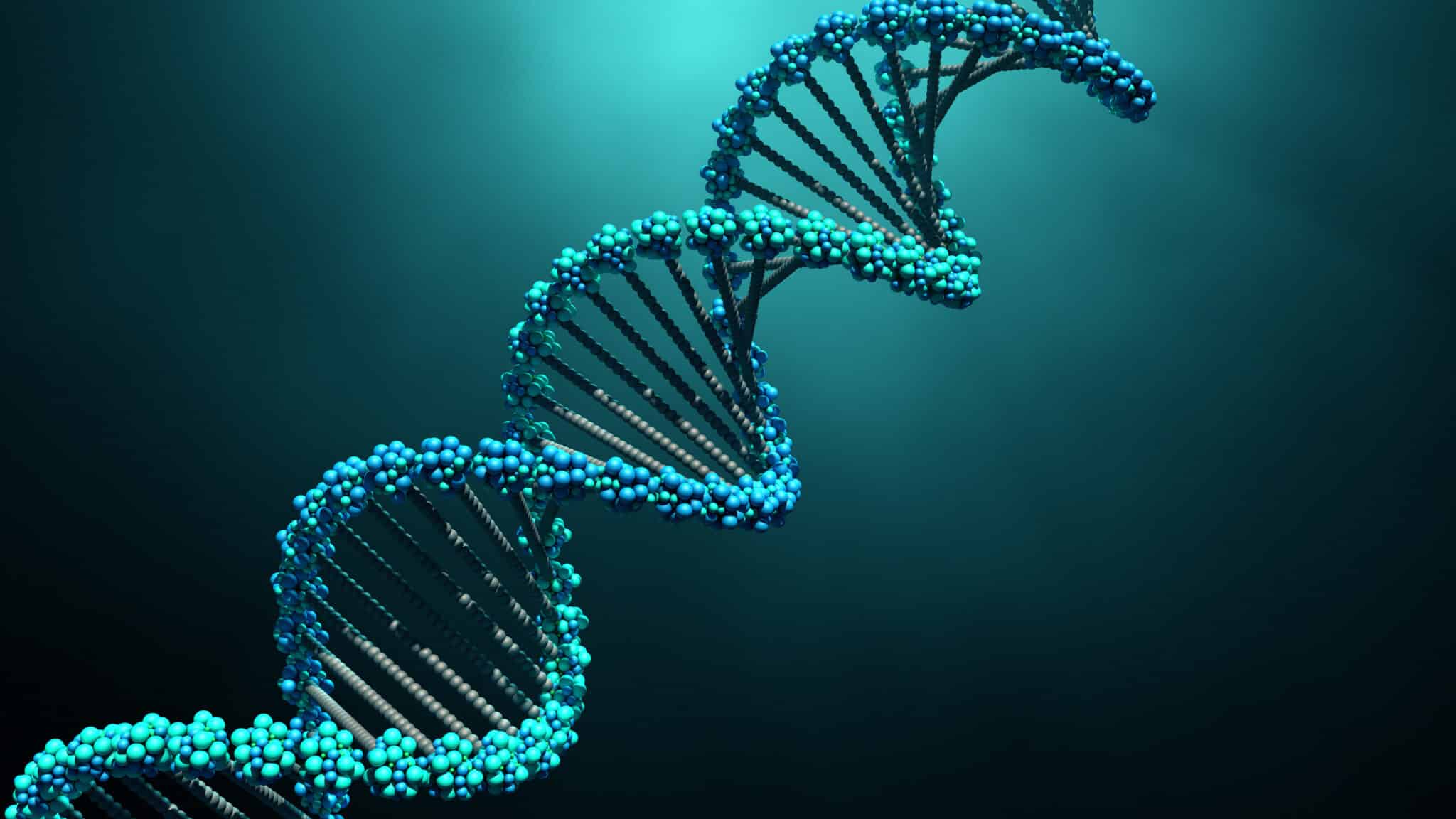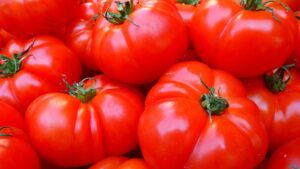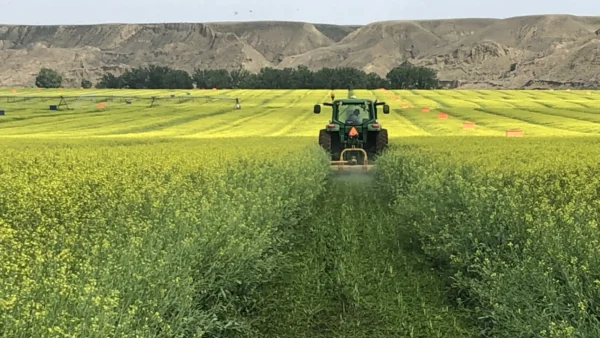Bringing epigenetics and computational sciences together.
New plant breeding technologies (NBTs) are a group of techniques which encompass a wide variety of approaches, methodologies and unique characteristics to develop new varieties. They may either be used alone in the breeding process or they may be used in combination with other NBTs, conventional breeding approaches or with genetically modified (GM) technologies. NBTs usually allow for the development of new varieties in a faster and more precise manner than conventional breeding techniques.
Traditional wisdom teaches that DNA is the foundation of heredity. A single letter change in this code can lead to genetic changes. The nucleotide cytosine (the C in the genetic code) can be changed into a methylcytosine.
“This cytosine methylation, which is one type of epigenetic mark, is typically associated with repression of gene activity,” explains Frank Johannes, assistant professor at the Groningen Bioinformatics Centre. “In mammals, epigenetic marks are typically reset every generation, but in plants, no such dramatic resetting takes place. This opens the door to epigenetic inheritance in plants.”
The best-known epigenetic process is DNA methylation. This is the addition or removal of a methyl group (CH3), predominantly where cytosine bases occur consecutively. Another significant epigenetic process is chromatin modification. Many other types of epigenetic processes have been identified. Additional epigenetic mechanisms and considerations are likely to surface as work proceeds.
Using Epigenetics
Sound Agriculture is one of a group of emerging companies that are using a life science approach to discovery that combines molecular biology with modern computational power, resulting in an entirely new understanding of plant and microbe interactions.
“The concepts and knowledge of epigenetic have been known in the plant science world for many years. The foundational science has been there. What we are learning now is how to harness that knowledge,” says Travis Bayer, Sound Agriculture CTO and co-founder. “In our group, we are learning how epigenetics works in the plant. Through these discoveries, we are learning how to harness that aspect of plant science and how to take the next step to guide that to the faster introduction of plant traits.”
To introduce an epigenetic trait, Bayer and his team use computational sciences to process big data to detect a specific target in the plant’s DNA genome. Using a proprietary method, cytosine methylation is used to silence a specific gene function. The modified plant is genetically identical to the parent plant. There are no DNA changes. Current traits of interest include drought tolerance, disease resistance, yield increase or other agronomic factors like fertility and nutrient use efficiency.
“We are enhancing the plant’s physiology, not adding new pathways such as one that would make a plant glow in the dark,” Bayer says. “The epigenetic pathway is a natural pathway with no large-scale changes in plant biology or the way the plant works. We are not introducing new genes like they do with transgenics. What we are doing is enhancing specific aspects of the plant’s physiology.”
There are some new discoveries for breeding that in Sound Agriculture’s case involve epigenetics, which is different from CRISPR and gene editing. Sound uses proprietary algorithms to analyze genomic data to identify and silence the genes’ expression levels as a way to guide crops to reveal desired traits.
“We can do that in a way that is a lot faster than traditional breeding and even faster than CRISPR itself. We take a broad view of what these new technologies are. It is the integration of these technologies — gene editing, epigenetic computational sciences — that will change the way breeding is done over the next couple of years.”

Bayer says a new trait can be developed within a few months. In some of their recent work, a new trait has been developed in a matter of weeks. He believes that by using epigenetics and NBTs, researchers together with plant breeders will advance increases in plant productivity comparable to the inflection points resulting from the invention of double-cross hybrids in the 1930s and the Green Revolution.
NBTs Are Not Welcome In EU, Organic Products
When the first transgenic glyphosate-resistant soybeans were deregulated in the United States in 1996, farmers and organic food producers both embraced the genetically modified GM crops albeit for totally opposite purposes. For farmers, GM crops opened a path to convenient and more economical production practices. With GM crops, they could apply glyphosate as a post-emergence spray over their entire field planted to a herbicide-resistant variety of soybeans and kill the weeds without harming their crop. For the organic health food producers, GM crops represented all that was wrong and evil with industrial globalization and multinational seed companies. Identifying their organic products as non-GM became a powerful marketing tool they can use to definitively set their products apart and above all others.
There is a new ongoing debate as to what plant breeding technologies constitute genetic modification. The transgenic GM crops introduced more than 20 years ago remain verboten for organic food production. If the pro-organic Cornucopia Institute and other organic food industry proponents have their way, all forms of gene editing and NBTs would be classified as GM and join the list of practices prohibited for the production of food products eligible to be certified USDA Organic.
“We strongly oppose any efforts to revisit the issue of any type of genetic engineering in organic certification, and we will work to ensure that all genetic engineering remains an excluded method,” says Organic Farmers Association President David Colson. “Any suggestion that we should explore gene-editing or any other type of genetic engineering, would distract from the core issues the organic market is facing right now.”
On the other hand, some organic growers do see NBTs as a potential boon to their industry and are calling for revised rules that would allow growers to benefit from crop improvements created using gene editing. Klaas Martens, a prominent voice in the organic movement and a third-generation grain and livestock farmer, operates a 1,600-acre farm in New York’s Finger Lakes region. He also owns a feed and seed business. Martens says he would be receptive to using CRISPR gene editing technology to grow versions of naturally occurring crops that restore soil health.
“If it could be used in a way that enhances the natural system, and mimicked it, then I would want to use it,” Martens says. “But it would definitely have to be case by case.”
The farmers who are opposed to an absolute ban of biotechnology for organic production underscore the belief held by many that USDA Certified Organic crops can help farming become more sustainable as a rising global population demands more food.
“In my view, the use of genetic engineering technologies is the most powerful and honest ‚Äòorganic’ tool we have,” says Oliver Peoples, president and CEO of Yield10 Bioscience, an agricultural bioscience company focusing on the development of disruptive technologies to produce step-change improvements in crop yield for food and feed crops.
“While some consumers may oppose the use of the term ‚Äòorganic’ for genetically engineered food, it’s important to note that organic does not always constitute natural ‚Äì since there is a long list of products that are approved for use in organic farming. There are often higher levels of fungal toxins on organic corn. Today, anti-GMO activity is perpetuated, in the public eye, by individuals who may be well-meaning but unaware of the stringent safety regulations that genetically modified foods are actually required to pass, or by individuals who stand to benefit financially from non-GMO labeling,” Peoples concludes.
There are indications that a compromise may be beginning to gain traction, at least as a topic of conversation within the USDA. In testimony presented to the U.S. House Agriculture Subcommittee in July 2019, USDA Undersecretary Greg Ibach indicated NBTs could make important contributions to improved crops, organic as well as conventional.
“As the National Organic Standards Board set the rules originally, GMOs are not eligible to be in the organic program. However, we’ve seen new technology, including gene-editing, that accomplishes things in shorter periods of time than a natural breeding process can. I think there is the opportunity to open the discussion to consider whether it is appropriate for some of these new technologies that include gene-editing to be eligible to be used to enhance organic production and to have drought and disease-resistant varieties, as well as higher-yield varieties available,” Ibach testified.
In the European market, genetically altered seeds are either prohibited or very tightly regulated. Without further regulatory action that would involve separate legislative approval procedures for most NBT products, products derived using biotechnology are highly regulated and difficult to market. Needed changes in legislation do not appear likely in the near future. To make any changes, the EU Commission would require a widespread political consensus and strong public support before making any changes favorable to NBT products. Both will be difficult to achieve given the controversial nature of the technology. The Court of Justice of the European Union (CJEU) in July 2018 issued a judgment in the Case C-528/16 on mutagenesis went against the opinion of the Advocate General. The CJEU opted for a broad application of the GMO legislation that would subject products of genome epigenome editing techniques such as CRISPR and most NBTs to the same regulatory regime governing GMO approval. The Court’s decision effectively puts the future of these technologies into an indefinite regulatory limbo.
“While plant breeding companies may be enthusiastic in principle about introducing new breeding technologies into European breeding programs, European consumers do not openly support GM foods. There is no real market for genetically improved crops in the EU. GM foods are rarely found on store shelves,” reports Tomasz Zimny, lead author of a July 2019 analysis of the EU legal status of NBTs. The analysis was published by the Institute of Law Studies, Polish Academy of Sciences, Warszawa.
Another legal setback for NBTs occurred in December 2019, when the European Commission unveiled terms of its Green Deal, a regulatory framework intended to achieve a climate-neutral economy by 2050. All previous mentions of whether or not to classify NBTs as GMO was deleted from the Green Deal proposal.
“We’re at the forefront of genome editing technology, and I consider this genome editing 1.0,” David Bubeck, Research Director – Logistics for Global Breeding Services and NA Regional Crops at Corteva said in a recent Seed World interview. “We need the world to have a synchronous view and global policies toward these technology opportunities; otherwise, we (as in society) will never reap the benefits of future versions of enabling plant breeding technologies such as genome editing version 10.0 or 20.0. When we look out to 2040, really mastering the genome and being able to leverage genetic diversity at all levels and in all places will be front and center. The frontiers of the future are changing, and we as an organization have to be ready to change if we are going to shape the future seed market.”













